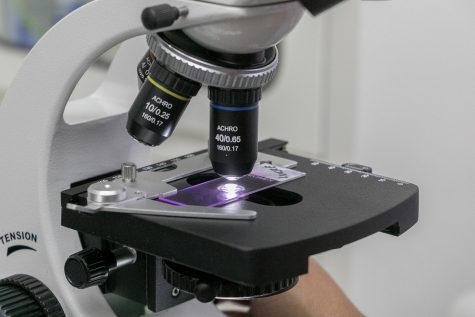The Science of Summer: Tanning
Tanning is easy, how it works is more interesting.
South Florida is not lacking in ways for you to bronze your statuesque figure. A simple Google search will pull up five tanning salons, all within just one mile of FAU’s main campus in Boca Raton. There are self-tan and sunless tanning products in the center aisle of every CVS or Walgreens, and spray tans are always in season. But this is South Florida — all it takes to get that awesome tan is to go outside!
Now that summer is upon us, many of you will be venturing outdoors, going to the beach to bask in the sun’s warm embrace, but many people don’t really know the mechanism behind a tan or why the skin gets tan in the first place. Well, get your sunscreen out because you are about to be enlightened.
Tanning is the human body’s basic protective mechanism that guards its cells from the damaging ultraviolet radiation that strikes the skin every time we go outside. Long exposure to UV light can be detrimental — striking the nucleus of our cells, it can damage the precious DNA within and in turn may lead to mutations and potentially cancerous cells. This is the cause of that dirty term that we hear so often in South Florida: skin cancer. It is basically the spreading of rogue cells that have been damaged by the sun’s UV rays.
So how does our skin protect itself? The answer is melanin. This lovely pigment, sought after by so many for its glorious darkening properties, is what is really behind a tan.
Melanin (Melas, meaning dark or black in Greek) is a common pigment that is responsible for the shade of darkness of your skin and hair. The more melanin produced in the skin and hair, the darker it becomes. Think of the melanin as a protective cap over a cell which may absorb the damaging rays. Special cells called melanocytes produce this pigment as a protective response to UV rays penetrating the skin’s surface. They respond to sunlight in one of two ways: They either increase the production of melanin or they darken the melanin already found in the skin.
The two types of skin melanin are phaeomelanin and eumelanin. The difference between these two varieties is that phaeomelanin contains a more reddish hue, while eumelanin has a dark brown color. As you can probably guess, red hair contains much more phaeomelanin, while eumelanin is more prevalent in dark hair colors. The lips are another example of an area with a greater concentration of phaeomelanin because they are usually more red or pink colored. An individual with a greater phaeomelanin production will respond to sunlight with a more pinkish color, while a greater eumelanin production will result in darker skin coloration.
We are constantly being bombarded by the suns radiation every time we go outside. Most of the time, our existing melanin is more than enough to protect us, but even if it’s not, the increase in melanin is so small it is barely noticeable within the darkening of our skin. However, this changes when we go outside for a longer period of time, expose more skin or are specifically aiming to tan.
Tanning is the exposure of skin to damaging radiation. The dark complexion of a tan that we desire and pursue is really just a forced protective response to damage. This doesn’t mean that we should completely avoid tanning and start bathing in sunscreen before we walk out the door. What it does mean is that, when we expose ourselves for longer periods of time, our skin is racing to protect us, and after a while it just can’t keep up.
Exposing yourself gradually will permit melanin production to slowly build up while preventing damage to your skin. Applying sunscreen will also protect your skin but still allow for the production of melanin and darkening of existing melanin at a slower and safer rate. This buildup will make your skin much more resilient to the harmful properties of the sun without risking skin damage in the process.
So grab your flip-flops and your towels, but as you are running out the door stop and take a few seconds to think about all those melanocytes — millions of them bracing themselves, getting ready to crank out melanin as those ruthless rays of sunlight beat down on you. Remember to thank them, because getting you that nice tan is just a byproduct of their real job, one much more important.











